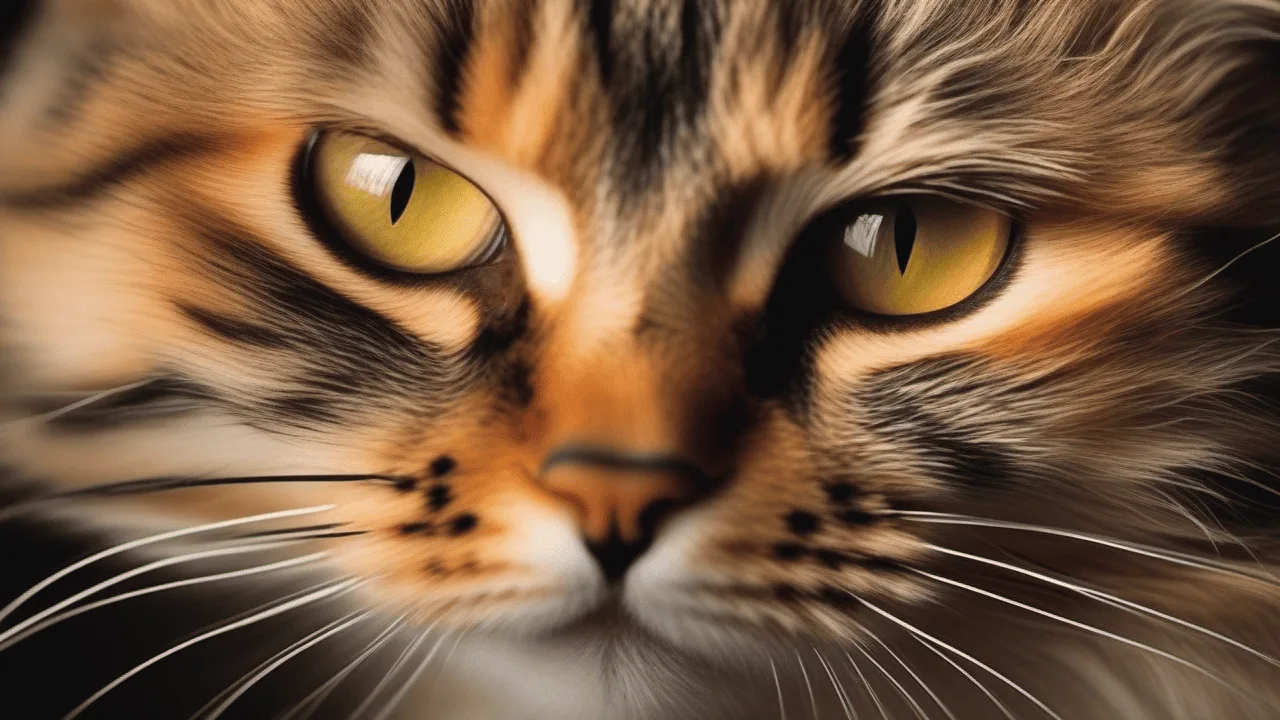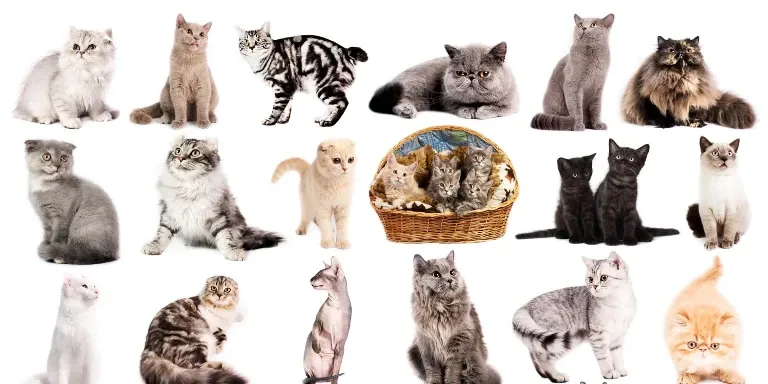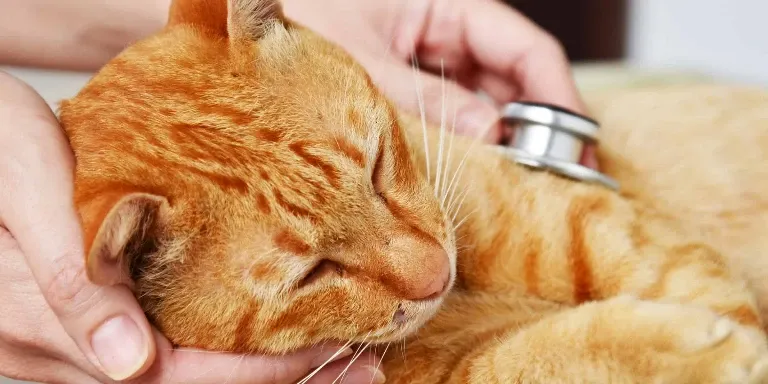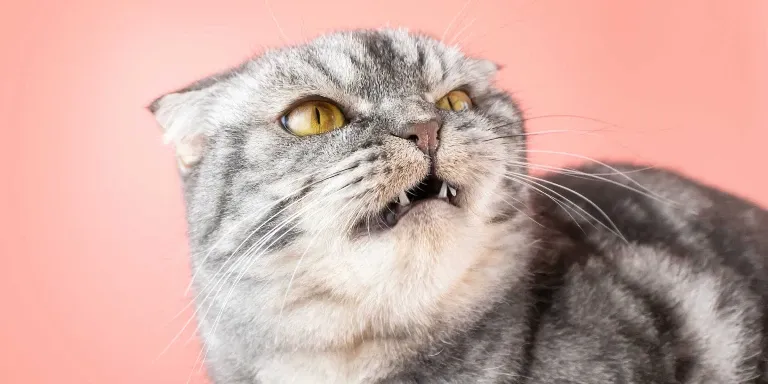The Best Fluffy Pancakes recipe you will fall in love with. Full of tips and tricks to help you make the best pancakes.

Have you ever looked at your mixed breed cat and wondered what breeds make up their unique genetic makeup? Like a puzzle with missing pieces, it can be challenging to figure out your cat’s ancestry. However, just like humans, cats inherit physical traits, personality traits, and breed-specific behaviors from their parents.
By understanding these characteristics and gathering information, you can identify your cat’s breed mix and gain insight into their individual needs and preferences. Think of your mixed breed cat like a delicious recipe. Just as a recipe combines different ingredients to create a unique flavor, your cat’s breed mix combines different breeds to create a unique set of physical and behavioral traits.
By understanding the individual ingredients that make up your cat’s unique flavor, you can gain insight into their personality, behavior, and health needs. In this article, we will explore the different tools and methods for identifying your cat’s breed mix, common mixed breed combinations, and what you can expect from your mixed breed cat.
Understanding Mixed Breed Cats
If you’ve ever wondered about the fascinating world of mixed breed cats, you’re in for a treat! Understanding mixed breed cats is essential for cat owners who want to know more about their feline friends.
One way to do this is through genetic testing, which can help determine the breeds that make up your cat’s unique genetic makeup. Genetic testing is a powerful tool that can help cat owners better understand their pet’s behavior and health needs. It works by analyzing your cat’s DNA and comparing it to breed-specific markers. This can help identify the breeds that make up your cat’s unique genetic profile, giving you a better idea of their temperament, health risks, and other important characteristics.
Another important aspect of understanding mixed breed cats is breed standardization. This refers to the process of defining breed characteristics that are desirable and promoting them through breeding programs.
While mixed breed cats don’t have a specific breed standard, understanding the characteristics of the breeds that make up your cat’s genetic profile can help you better understand their physical and behavioral traits. This can also help you provide better care for your feline friend, from choosing the right food to creating a stimulating environment that meets their specific needs.
Physical Characteristics
With fur as soft as a cloud and eyes that sparkle like diamonds, this feline beauty boasts a sleek and agile physique. When trying to identify the breed of your mixed cat, it’s important to pay attention to their physical characteristics.
One of the most noticeable features is their coat pattern. Mixed breed cats can have a variety of coat patterns, including tabby, calico, tortoiseshell, and solid colors. Some cats may also have unique markings, such as spots or stripes.
Another important aspect to consider is their eye color. Mixed breed cats can have a range of eye colors, including green, blue, gold, and brown. Some cats may even have eyes that are two different colors, a condition known as heterochromia. Eye color can sometimes provide clues to the breed of your mixed cat, but it’s important to note that it’s not a definitive factor.
Overall, identifying the breed of your mixed cat can be a challenge, as they can inherit physical characteristics from multiple breeds. However, paying attention to their coat pattern and eye color can provide some clues.
Regardless of their breed, mixed breed cats are often known for their unique and lovable personalities, making them a cherished companion to many.
Personality Traits
Mixed breed cats often have unique personalities that make them beloved companions. So, what determines a cat’s personality traits? Is it nature or nurture? Let’s take a closer look at the factors that can influence a cat’s personality.
- Traits vs Environment: While genetics certainly play a role in a cat’s personality, their environment can also have a significant impact. A cat who was socialized at a young age and exposed to different people, animals, and experiences may be more outgoing and friendly than a cat who wasn’t. Similarly, a cat who has been through a traumatic experience may be more fearful or skittish.
- Nature vs Nurture: It’s important to remember that a cat’s personality is a combination of both nature and nurture. While some traits may be inherited, such as a tendency towards shyness or aggression, how those traits are expressed can be influenced by their environment. For example, a cat who is naturally more dominant may become more aggressive if they’re not provided with appropriate outlets for their energy and behavior.
- Understanding Your Cat’s Personality: As a cat owner, it’s important to understand your cat’s personality traits and how they may be influenced by their environment. By doing so, you can provide them with the appropriate care, training, and socialization they need to thrive.
Whether your cat is playful or laidback, affectionate or aloof, they can make wonderful companions with the right care and attention.
Breed-Specific Behaviors
You may have noticed certain behaviors in your furry friend that are specific to their breed. Understanding feline instincts and breed-specific tendencies can help you adapt to your cat’s unique needs.
Each breed has its own set of characteristics that make them distinct from others. For example, Siamese cats are known for being vocal and assertive. They love to communicate with their owners and demand attention. On the other hand, Persians are known for being laid-back and affectionate. They enjoy cuddling and lounging around with their humans.
By knowing your cat’s breed, you can anticipate their needs and provide the right environment for them. It’s important to note that mixed breed cats can also exhibit breed-specific behaviors. By observing your cat’s actions and researching their potential breed mix, you can get a better understanding of what to expect.
With patience and proper training, you can help your mixed breed cat adapt to their unique tendencies and provide them with a happy and comfortable life.
Gathering Information
If you want to learn more about your feline friend’s unique characteristics and tendencies, gathering information about their breed and behavior is the first step.
Your mixed-breed cat may exhibit traits of one or more breeds, making it difficult to determine their exact heritage. To start, research sources like breed profiles, online forums, and veterinarian resources to understand the characteristics of various cat breeds.
Another option to gather information is DNA testing. While it may not be 100% accurate, DNA testing can provide insight into your cat’s breed makeup and potential health risks. There are several companies that offer at-home DNA testing kits specifically for cats, which require a simple cheek swab to collect DNA samples. Once the samples are analyzed, you’ll receive a report detailing the breeds found in your cat’s DNA.
Keep in mind that while DNA testing can be helpful, it’s not always necessary to fully understand your cat’s behavior. Paying attention to their unique quirks, habits, and interactions with you and other animals can also provide valuable insight into their personality and breed tendencies. Whether through research or observation, taking the time to learn about your cat’s breed and behavior can ultimately lead to a stronger bond between you and your feline companion.
Breed Identification Tools
Using DNA testing kits for felines can offer valuable insight into their genetic makeup and potential health risks, providing a deeper understanding of your furry friend’s unique traits and tendencies. However, it’s important to understand the limitations of breed identification accuracy when using these tools.
Firstly, breed identification accuracy can vary depending on the quality of the DNA sample provided. Factors such as age, diet, and environmental exposure can impact the quality of the sample and potentially affect the accuracy of the results. It’s important to carefully follow the instructions provided by the DNA testing kit and ensure that the sample is collected properly to obtain the most accurate results.
Secondly, it’s important to note that DNA testing kits may not be able to identify all breeds present in a mixed cat’s genetic makeup. Some breeds may be too closely related or have too little genetic diversity to be accurately distinguished from one another. In addition, some breeds may be less common or not included in the database of the DNA testing kit being used, which can limit the accuracy of the results.
It can be frustrating to receive inconclusive or unexpected results from a DNA testing kit, but it’s important to remember that breed identification accuracy isn’t always perfect. Emphasize the importance of focusing on your cat’s unique traits and personality rather than solely relying on breed identification.
However, DNA testing kits can still provide valuable information on potential health risks and genetic tendencies that may be present in your cat’s genetic makeup. Encourage cat owners to use this information to make informed decisions about their cat’s health and well-being.
Common Mixed Breed Combinations
Understanding the common combinations of mixed feline breeds can provide insight into your furry friend’s potential traits and tendencies.
One popular mixed breed is the Tabby Siamese mix. These cats are known for their striking blue eyes and unique tabby patterns. They’re typically intelligent and vocal, with a strong desire for attention and affection. They may also display some of the Siamese breed’s traits, such as their love for play and their tendency to be vocal.
Another common mixed breed is the Calico Persian mix. These cats are recognized by their long, fluffy coats and distinct calico coloring. They’re often known for their laid-back personalities and relaxed attitudes. They may also inherit some of the Persian breed’s traits, such as their love for lounging and their tendency to be independent. These cats require regular grooming to maintain their luxurious coats.
It’s important to note that mixed breed cats can inherit traits from both their parents, making it difficult to predict their exact characteristics. However, understanding the common combinations of mixed breeds can provide some insight into your furry friend’s potential traits and tendencies.
By knowing your cat’s mixed breed, you can better understand their behaviors and provide them with the proper care and attention they need.
Can a Tabby Cat Be Considered a Mixed-Breed?
Yes, a tabby cat can be considered a mixed-breed or crossbreed. The distinctive coat pattern of a tabby cat is not tied to a specific breed and can be found in many different breeds and mixed-breed cats. So, a tabby cat can definitely be considered a mixed-breed or crossbreed.
Final Thoughts
So, you’ve finally figured out what breed your mixed cat is! It may have taken some research and digging, but now you have a better understanding of your feline friend’s physical characteristics, personality traits, and breed-specific behaviors.
But let’s not forget that your cat is more than just their breed. They’re a unique individual with their own quirks and personality. No matter what breed they are, they’re still your beloved companion who brings joy and love to your life.
So, congratulations on discovering your cat’s breed, but never forget that they’re more than just a label. They’re a cherished member of your family who brings happiness to your home.
Enjoy your time with your furry friend and continue to learn more about them every day.








